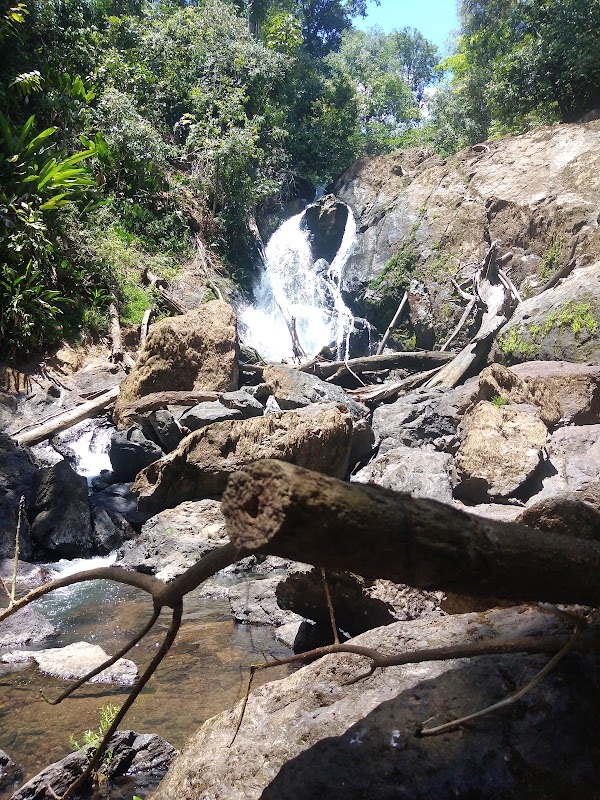Into the Wild: Hiking Corcovado National Park’s Biodiversity Frontier
Hiking Corcovado National Park offers an unfiltered encounter with one of the most biodiverse places on Earth. From Puerto Jiménez, adventurers can tackle rugged trails that lead through dense jungle alive with wildlife, ending at stunning Pacific coast vistas.
Start Early to Beat the Heat
Begin your hike before sunrise to avoid hiking in the midday heat and to give yourself ample time to reach key points before park closing hours.
Choose Waterproof Hiking Boots
Trails grow muddy and river crossings are common, so boots with excellent grip and waterproofing keep you safe and comfortable throughout the trek.
Carry Plenty of Water
High humidity and steady climbing mean dehydration sets in quickly; 3 liters per person is a recommended baseline for the hike.
Bring Lightweight Bug Protection
Long sleeves and insect repellent shield you from mosquitoes without overburdening you with heat during your hike.
Into the Wild: Hiking Corcovado National Park’s Biodiversity Frontier
Corcovado National Park in Costa Rica’s Osa Peninsula is a pulse of life, fiercely resilient and alive. Hiking its trails from Puerto Jiménez means stepping into a forest where every step counts—sixteen kilometers of dense jungle, muddy paths, and steep inclines demand respect from adventurers. The terrain shifts underfoot—root-entangled earth giving way to slippery stones where streams dare you to cross. Elevation gain is moderate but constant, climbing roughly 400 meters, enough to earn every breathtaking viewpoint.
The jungle itself is a living character, with towering trees overhead that seem to lean in, whispering secrets of jaguars and tapirs moving silently in the shadows. Birdsong rattles through the canopy, punctuated by sudden calls of howler monkeys. Waterways snake alongside the trail, currents pushing forward as if urging you deeper into this fiercely alive ecosystem.
Starting early from Puerto Jiménez is crucial; the park closes at sunset, and heat rises quickly by mid-morning. Wear sturdy waterproof boots—they grip the slick terrain while protecting against mud and unexpected river crossings. Carry at least 3 liters of water per hiker to stay hydrated as the humidity clings to your skin. Lightweight long sleeves shield from insects but don’t smother you.
The trail has well-marked signs but remains wild—prepare for slippery roots and sudden rain that the forest drinks greedily. Wildlife is a watchful presence; patience might reward you with a glimpse of a scarlet macaw in flight or a tapir foraging quietly.
Every lookout offers a reminder: this isn’t a path to conquer but an invitation to engage with an ecosystem fiercely itself. The beach at Sirena Station marks a natural reward—tidal rhythms coaxing out crabs and wading birds. Here, the jungle gives way to Pacific vistas wild as the forest but open, expansive.
Ultimately, hiking Corcovado is both challenge and communion. Preparation and respect ensure that when you emerge, your senses carry the imprint of one of Earth’s richest wild places.
Nearby Trips
All Adventures
Boat Charters
Water Activities
Adventures near Puerto Jiménez
Discover the unique and memorable adventures that make Puerto Jiménez special.
Frequently Asked Questions
How long is the hike through Corcovado from Puerto Jiménez?
The main trail covers about 16 kilometers round trip, typically taking between 8 to 10 hours depending on pace and stops.
Is it safe to hike alone in Corcovado National Park?
While technically possible, it’s strongly advised to hike with a guide or group due to dense jungle terrain, wildlife presence, and rapid weather changes.
What kind of wildlife might I see on this hike?
Expect to see scarlet macaws, howler monkeys, coatis, tapirs, and if lucky, jaguars or harpy eagles, among many other species.
Are permits required to enter Corcovado National Park?
Yes, permits are mandatory and must be purchased in advance through the National System of Conservation Areas (SINAC).
Can I camp overnight inside the park?
Camping is allowed only at designated stations like Sirena with prior authorization. Most hikers complete the trek in a single day.
What weather conditions should I prepare for?
Expect hot and humid conditions year-round with sudden tropical rain showers, especially during the wet season from May to November.
Recommended Gear
Waterproof Hiking Boots
Crucial for navigating muddy paths and slippery rocks; prevents water ingress and ankle injuries.
Hydration System or Water Bottles
Ensures adequate hydration; pack a minimum of 3 liters per person to counter high humidity.
Lightweight Rain Jacket
Protects from sudden tropical downpours while remaining breathable to prevent overheating.
Insect Repellent with DEET
Keeps mosquitoes and other biting insects at bay during the humid hike.
Local Insights
Hidden Gems
- "The viewpoint near Sirena Station offers a rare panoramic of the jungle canopy meeting the Pacific coast."
- "A short side trail to the La Leona waterfall presents a less-trodden spot where refreshing pools await."
Wildlife
- "Look for the elusive tapir, often seen grazing at dawn or dusk along the trails."
- "Scarlet macaws frequently fly overhead, their bright wings flashing above the thick green."
History
"Corcovado holds cultural significance for local indigenous communities and remains one of the largest intact tropical rainforest tracts in Central America."

